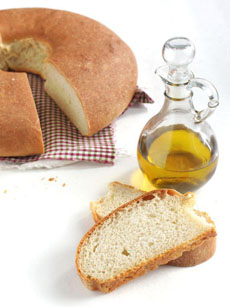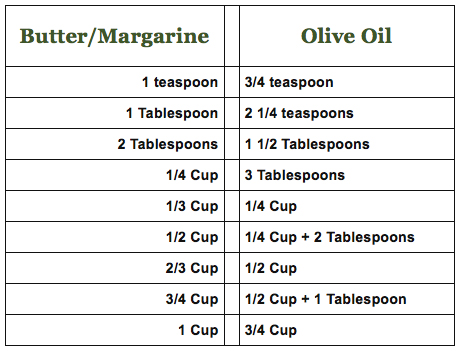TIP OF THE DAY: Switch To Olive Oil
|
Here’s a New Year’s resolution that isn’t tough to keep: Switch from olive oil to butter for your everyday fat.
You’ve been hearing it for 10 years: olive oil is a heart healthy fat. Here’s what the Harvard School Of Public Health has to say: It’s time to end the low-fat myth. That’s because the percentage of calories from fat that you eat, whether high or low, isn’t really linked with disease. What really matters is the type of fat you eat. And if you have lactose sensitivity, remember that butter is dairy. |
 The choice is yours, but make the right choice. Photo courtesy Olive Oil Emporium. |
|
|
In 2004, the FDA allowed this health claim: “Limited and not conclusive scientific evidence suggests that eating about 2 tablespoons (23 grams) of olive oil daily may reduce the risk of coronary heart disease due to the monounsaturated fat in olive oil. To achieve this possible benefit, olive oil is to replace a similar amount of saturated fat and not increase the total number of calories you eat in a day.” Last year, researchers at Glasgow University in Scotland suggested that two teaspoons (20 ml) per day of extra virgin olive oil for 6 weeks “would be enough to see beneficial effects for the heart.” |
||
 Dip bread in olive oil instead of spreading it with butter. Use a more flavorful EVOO, and add seasonings—herbs, pepper, salt, spices—as well as a splash of balsamic vinegar if you like. Photo courtesy FlavorYourLife.com. |
NUTRITIONAL COMPARISON: OLIVE OIL VS. BUTTER If you miss the flavor of butter, transition away from it by cooking in oil and finishing the dish by adding a small amount of butter at the end. You don’t need to cook with extra virgin olive oil: The heat destroys the delicate flavors that you pay for. Instead of EVOO, look to virgin olive oil or what is known as ordinary olive oil—the major supermarket brands like Bertolli and Filippo Berio. Here are the different grades of olive oil. Do, however, use EVOO as a garnish: toss it with pasta, rice and vegetables; use it as a bread dipper. Select olive oils with the flavor profile you prefer—fruity, herbal, peppery, etc. (Alas, since flavor information is rarely on the label, you need to experiment or get recommendations from your retailer.) Use the appropriate grade of olive oil for different types of food preparation. |
|
|
WHAT ABOUT BAKING? We use butter for cakes and cookies, because our palate wants butteriness in those foods. But, as everyone who follows the cake mix directions to mix the dry ingredients with olive oil, oils work just fine. Unless you want the flavor of olive oil (Italian olive oil cakes are delicious!), use a neutral oil like canola. While you won’t get buttery flavor with oil, it does produce a moist cake, which tends to be be lighter and taller than a cake made with butter. The texture is is a bit more coarse and the crumb is more open (less dense). Butter produces shorter, more compact cakes, with a finer texture and a smaller crumb due. The texture will be a bit creamier, and of course it sports that rich, buttery taste. Here’s a conversion chart for baking, courtesy of Castillo de Piñar, which has many tips for cooking with olive oil:
|
||
